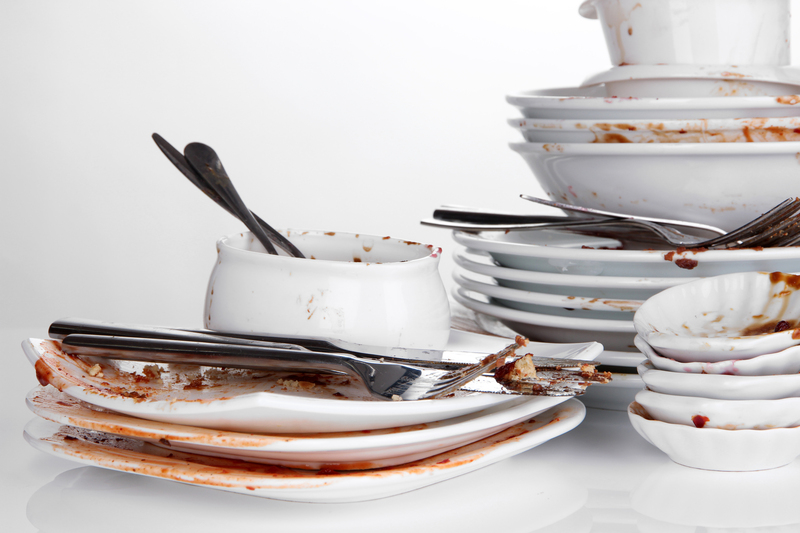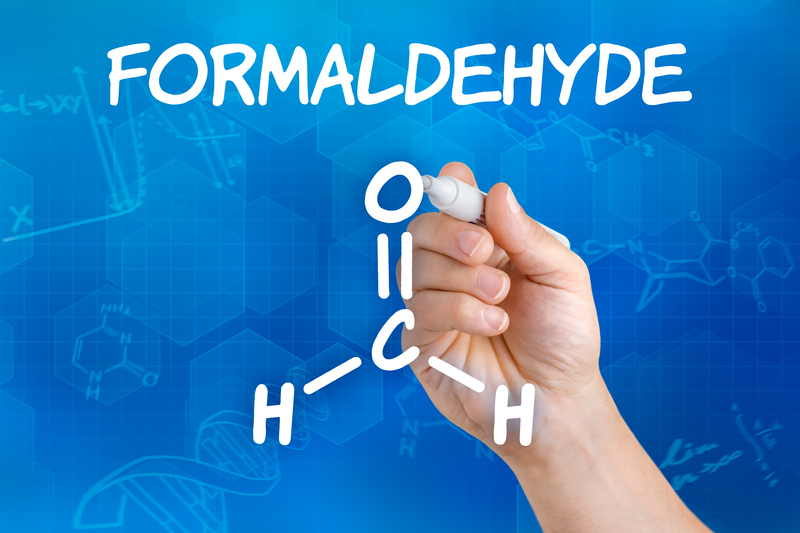Grease-Free Zone: The Ultimate Guide to Cleaning Enamel Oven Trays
Posted on 19/06/2025

Grease-Free Zone: The Ultimate Guide to Cleaning Enamel Oven Trays
Are you tired of stubborn baked-on grease and unsightly stains that cling to your oven trays? Maintaining enamel oven trays can be a challenge, but a little knowledge goes a long way. In this comprehensive guide, we'll share expert tips, effective cleaning methods, and smart maintenance practices to keep your oven trays sparkling clean and grease-free!
- Why Cleaning Enamel Oven Trays Matters
- Understanding Enamel Coating
- Best Ways to Clean Enamel Oven Trays
- Deep Cleaning for Stubborn Stains
- Routine Maintenance for Long-Lasting Shine
- Common Mistakes to Avoid
- Frequently Asked Questions
- Final Thoughts: Embrace a Grease-Free Oven
Why Cleaning Enamel Oven Trays Matters
A clean enamel oven tray doesn't just look appealing -- it also plays a crucial role in your kitchen hygiene. Let's explore some of the main benefits of keeping these trays spotless:
- Prevents Food Contamination: Grease buildup can harbor bacteria and affect the taste of your cooked meals.
- Maintains Non-stick Properties: Enamel is prized for its slick surface; regular cleaning preserves its effectiveness.
- Maximizes Appliance Lifespan: Proper care prevents corrosion and extends the life of both the tray and your oven.
- Improves Cooking Quality: A grease-free surface ensures even heating and browning of your favorite dishes.
Understanding Enamel Coating
Before diving into cleaning methods, it's important to understand what makes enamel oven trays unique. Enamel trays are made by fusing powdered glass to metal at high temperatures, creating a hard, glossy, and non-porous surface. These trays excel at resisting rust, scratching, and sticking, but they can be damaged by harsh chemicals, abrasive scrubbers, or sudden temperature changes.
Why Choose Enamel Oven Trays?
- Durability: The glass-like finish is tough, long-lasting, and resistant to staining.
- Easy to Clean Surface: Food is less likely to adhere, making routine cleaning a breeze.
- Attractive Appearance: Shiny and sleek, perfect for modern kitchens.
However, to retain these benefits, gentle yet thorough cleaning is essential.
The Best Ways to Clean Enamel Oven Trays
Whether you're dealing with a minor spill or a stubborn, baked-on mess, cleaning enamel baking trays doesn't have to be a chore. Below are step-by-step instructions for restoring your trays to a grease-free state.
Routine Cleaning After Everyday Use
- Let the Tray Cool: Never immerse a hot enamel tray in cold water. Let it come to room temperature to avoid cracks or chips.
- Rinse Immediately: Brief rinsing after cooking prevents food particles and grease from hardening on the surface.
- Use Warm, Soapy Water: Immerse the tray in warm water mixed with mild dish soap. Let it soak for 10-15 minutes.
- Soft Sponge or Cloth: Clean the tray with a non-abrasive sponge or soft cloth. Avoid steel wool or harsh scouring pads, which can scratch the enamel.
- Rinse and Dry: Rinse thoroughly to remove any leftover soap and dry with a clean tea towel.
Natural Solutions for Light Staining
- Baking Soda Paste: Mix baking soda with a little water to form a paste. Apply to stains, let sit for 10-20 minutes, then gently scrub.
- White Vinegar: Soak the tray in a mixture of equal parts white vinegar and water for 15 minutes before cleaning.
- Lemon Power: Lemon juice helps cut grease and leaves a refreshing scent. Slice a lemon in half, rub it over the tray's surface, let it sit, then wipe clean.
Tip: These methods are safe for delicate enamel baking trays and avoid harsh chemicals.
Dishwasher Usage: Yes or No?
- Check Manufacturer Instructions: Some enamel trays are dishwasher safe, but it's best to confirm beforehand.
- Placement: If using a dishwasher, position the tray on the bottom rack away from items that may scratch it.
- Dry Immediately: Remove and dry the tray as soon as the cycle ends to prevent water spots and streaks.
Note: Over time, frequent dishwasher use may dull the shine of some enamel coatings.
Deep Cleaning for Stubborn Grease and Stains
Even the best-maintained oven trays sometimes fall victim to burnt-on grease and residue. Don't worry -- with a little extra effort (and patience), you can restore your tray's pristine surface.
Baking Soda and Hydrogen Peroxide Method
- Sprinkle Baking Soda: Cover the stained area with a generous amount of baking soda.
- Add Hydrogen Peroxide: Drizzle a small amount of hydrogen peroxide over the baking soda to form a fizzy layer.
- Let Sit: Allow the tray to sit undisturbed for several hours, or even overnight.
- Wipe and Rinse: Gently scrub with a soft sponge and rinse well. Repeat if necessary for stubborn stains.
Commercial Oven Cleaners for Enamel Trays
- Enamel-Safe Cleaners: Choose only non-abrasive, enamel-compatible oven cleaning products.
- Follow Instructions: Adhere strictly to manufacturer guidelines and thoroughly rinse the tray after use.
- Ventilate Your Kitchen: Open windows or use an extractor fan to minimize inhaling fumes.
Boiling Water Soak
- Place your enamel tray in a large, deep sink or bathtub.
- Fill with boiling water and dissolve a few tablespoons of baking soda or dishwasher detergent.
- Let the tray soak for 1-2 hours. Wipe clean and rinse thoroughly.
These deep cleaning techniques break down tough, baked-on grease without compromising the enamel surface.
Routine Maintenance for Long-Lasting Shine
Consistency is key when it comes to keeping your enamel oven trays grease-free and beautiful.
Top Maintenance Tips
- Clean Promptly After Use: The sooner you clean, the easier it is to remove grease before it sets.
- Use Baking Paper or Foil: Line trays when roasting or baking to minimize mess and protect the surface.
- Inspect Regularly: Check for chips, cracks, or signs of damage which can lead to rust or reduced performance.
- Store Carefully: Avoid stacking heavy items on trays to prevent scratches or chips in the enamel.
- Occasional Deep Clean: Every few months, give your trays a more thorough clean to tackle hidden grime and restore shine.
Remember: Maintaining a grease-free zone in your oven improves cooking outcomes and can save money on replacements!
Common Mistakes to Avoid with Enamel Oven Trays
Proper cleaning of enamel oven trays is as much about what not to do as it is about best practices. Be sure to avoid:
- Using Steel Wool or Abrasive Pads: These can scratch or dull the glossy enamel finish.
- Applying Harsh Chemicals: Avoid bleach or caustic cleaners not marked safe for enamel.
- Thermal Shock: Immersing a hot tray in cold water can cause the enamel to crack.
- Leaving Trays Damp: Always dry thoroughly after washing to prevent mineral buildup or water stains.
- Overusing the Dishwasher: Excessive dishwasher cycles can eventually dull enamel coatings.
Frequently Asked Questions about Enamel Oven Tray Cleaning
1. Can I use baking soda on enamel trays?
Yes! Baking soda is mildly abrasive and highly effective on enamel. Just be gentle with your scrubbing, and avoid letting the paste dry out completely before cleaning it off.
2. Is it safe to use vinegar on enamel trays?
Absolutely. Vinegar is a natural degreaser, but be sure to rinse thoroughly, as leaving it on for too long can dull the shine of some enamel coatings.
3. How can I remove burnt-on residue without damaging the tray?
Try soaking in boiling water with baking soda, or use a hydrogen peroxide paste as described above. Avoid any cleaning tools harder than a sponge.
4. Should I avoid all commercial oven cleaners?
Not necessarily! Just ensure the product is suitable for enamel surfaces and follow the directions closely.
5. My enamel tray is chipped. What should I do?
Surface chips can lead to rust and further damage. If it's a minor chip, use the tray with a liner like baking paper. For severe damage, it's best to replace it.
Final Thoughts: Embrace a Grease-Free Oven
Enamel oven trays add style, function, and longevity to your kitchen, but only with regular and careful cleaning. As you've learned from this guide, maintaining a grease-free zone doesn't require harsh chemicals or industrial tools--just a smart, consistent cleaning routine and a gentle touch.
With these comprehensive tips, you'll keep your enamel oven trays looking pristine, your food tasting great, and your kitchen shining. So next time you slide a roast or batch of cookies into the oven, you can rest easy--your trays are spotless, grease-free, and ready for action!
Now that you know the secrets to cleaning enamel oven trays, make it part of your regular kitchen routine--and enjoy a healthier, more beautiful home-cooked meal every time!





